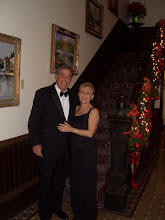
By all accounts most people would agree that recycling is a good thing and while advocates appreciate the effort, they say there’s a right and a wrong way to do it.“The bins are always full, which shows that people are using these,” said Tom Aldinger, an avid recycler and Meals on Wheels volunteer.As he cruises his route each week in an energy efficient Toyota Prius that most days averages more than 50 miles to the gallon, Aldinger reminds his elderly, shut-in friends to save their newspapers and junk mail. He gladly picks up the recyclables and stops by the three huge containers at North Delphine and East High streets.There Aldinger has to take some newspapers out of their plastic sleeves before placing them in the overflowing metal boxes.Environmental Co-op personnel say this is a crucial step that often is overlooked by residents with the best intentions who carry pounds of paper to the site in plastic bags and then put the entire parcel in the bin.“Sometimes it’s sorted at the Material Recovery Facility, but a lot of times if it’s questionable what’s in the bag, they will not open it and that defeats the purpose of recycling,” said Co-op Executive Director Marilyn May.She suggests emptying the paper from the sack and then reusing the plastic bag for future trips to the collection site. Otherwise, she said, when the material arrives at the sorting center, rather than separating paper from the plastic sacks, handlers may simply throw the bundles into the trash.“If they can’t see what’s in the bag they don’t open it,” Program Manager Glenna Brown said of the recovery center, where sorting is done by hand on a fast-moving conveyor belt. “The citizens are dong the right thing to recycle, we just want to make sure that what people take the time to recycle actually gets processed.”
When it comes to plastic items, there’s a protocol for that, too.There are two categories: Number one and two. The first class consists of items such as soda and water bottles while the second applies to milk jugs and detergent bottles.May said a good rule of thumb is to consider the size of the opening. Acceptable materials have small openings, whereas unacceptable items, such as yogurt, butter and cottage cheese containers, are wider.“We have seen a great deal of participation and we’re thankful to the citizens,” Brown said. “Just a little tweaking will make it the best collection site ever.”
When it comes to plastic items, there’s a protocol for that, too.There are two categories: Number one and two. The first class consists of items such as soda and water bottles while the second applies to milk jugs and detergent bottles.May said a good rule of thumb is to consider the size of the opening. Acceptable materials have small openings, whereas unacceptable items, such as yogurt, butter and cottage cheese containers, are wider.“We have seen a great deal of participation and we’re thankful to the citizens,” Brown said. “Just a little tweaking will make it the best collection site ever.”


No comments:
Post a Comment